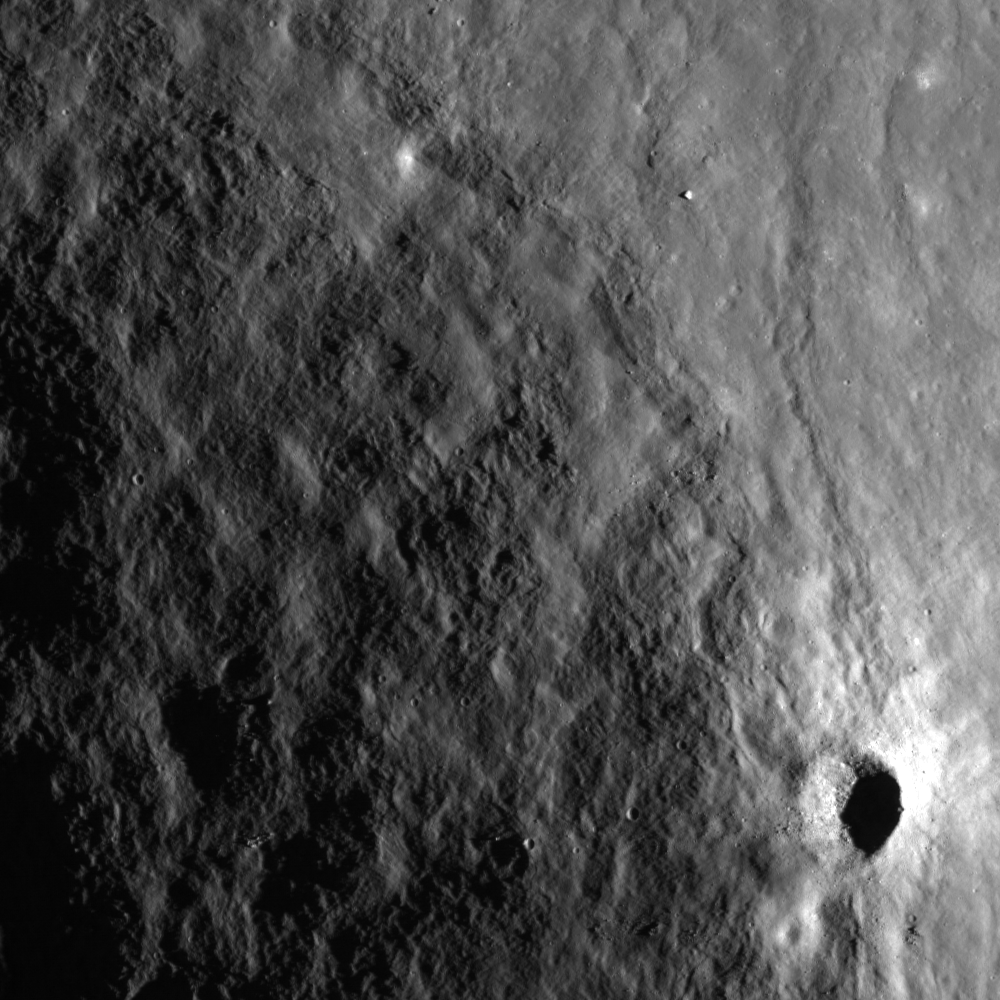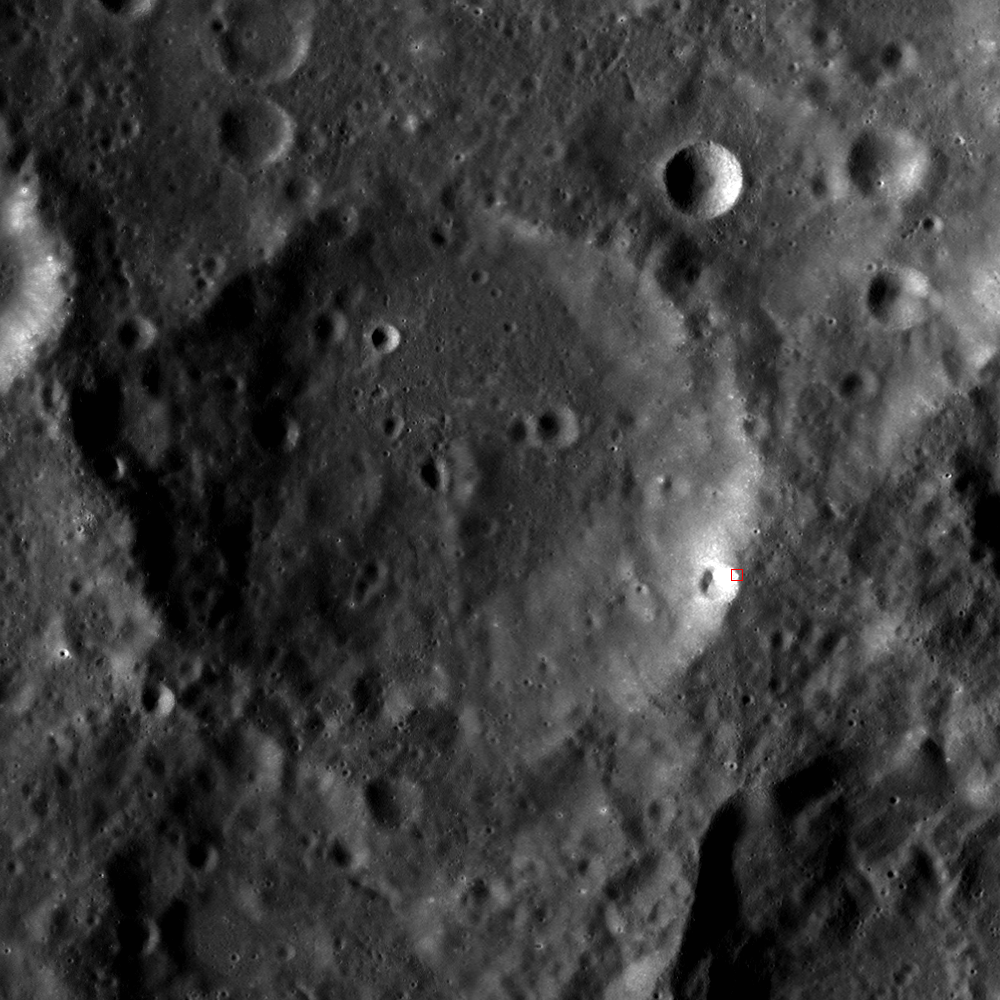
The law of superposition is one of the earliest geologic laws, based on the observations of Danish scientist Nicholas Steno. Originally formulated to describe relative ages of sedimentary rock units, the law of superposition works just as well on the Moon to describe relative age relationships of separate lunar terrains and craters. What are the relative ages of the different craters in today's Featured Image?
In today's Featured Image, we have three separate craters. Buisson crater is the largest crater at 57 km, with a ~4 km unnamed crater on its rim. Zooming in further, we have an even smaller ~110 m crater on the rim of the 4 km crater. The superposition of these craters gives us a relative age relationship with the 110 m crater the youngest, followed by the 4 km crater, and finally Buisson crater.
Explore more of crater relationships in the full LROC NAC!
Related Posts: Absolute Time
Published by Drew Enns on 20 December 2012
